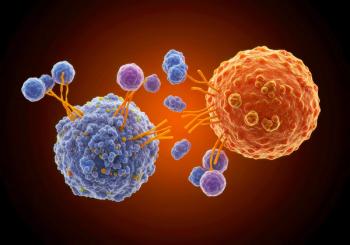
New Channels Identified as Possible Pharmacological Targets for Kidney Potassium Handling
Next-generation research shows that targeting specific Kir channels, which regulate salt reabsorption in the kidneys, could improve diuretic function in kidney patients.
The inwardly rectifying potassium (Kir) 4.1/Kir5.1 channel could be a novel drug target for diuretics, said Jerod Denton, MS, PhD, Ono Pharmaceuticals, Vanderbilt University, on November 5, during a session at the American Society of Nephrology Kidney Week conference in Orlando, Florida.
Denton and colleagues found multiple structural classes of Kir4.1/Kir5.1 channel inhibitors and activators that can be used in the therapeutic setting, especially for diuretic resistance due to salt reabsorption. These inhibitors/activators are considered “tool compounds,” but many current ones are not commercially available.
“My lab, over the last 13 or 14 years has developed tool compounds expanding to improve other channels,” Denton said in his presentation, titled “Next-Generation Inward Rectifier Potassium Channel Modulators: Discovery and Molecular Pharmacology.”
These tools “provide novel insights into pharmacological mechanisms for modulating Kir channel activity in general,” Denton said.
The Kir channel is a type of potassium channel with multiple members in its family. These include subunits Kir1.1-Kir7.1—Kir 4.1 can be homomeric or heteromeric, whereas Kir5.1 is heteromeric. Kir are important because they are broadly expressed in the kidneys, brain, and heart, and their role is to regulate membrane potential and ion transport.
Screening more than 80,000 chemically diverse compounds, Denton first identified Kir4.1/Kir5.1 inhibitors VU690 and VU720, which were highly selective for these potassium channels. VU720 was found to better block the pores near the Kir4.1/Kir5.1 channel, with robust activation.
More research led Denton to discover VU206, a “bona fide activator of Kir4.1/Kir5.1.” VU206 had observed high selectivity for these channels and it increased the activity of mutant Kir4.1/Kir5.1 channels.
“We were interested to know whether, or not, VU206 may be able to function and
‘rescue’ some of these mutations that have been identified,” Denton said.
An important facet to rescuing the channel activity is regulating membrane potential. VU206 was observed to improve this mechanism. In these cells, Denton also that the ability to modulate membrane activity is important because it can prevent patients from having too high potassium levels, which can lead to worse outcomes for kidney patients.
Though VU720 and VU206 are 2 structurally distinct small molecules that have opposing channel activity—one inhibits activity, and one activates it—they both have the potential to better regulate potassium and sodium handling, reducing the ill effects that mutations can cause.
“We are using cryo-EM structural analysis to understand the molecular mechanism of action of VU720 and VU206, which apparently bind near the same location in the pore but with different binding modes,” Denton said.
The team hypothesizes that both molecules, which bind to the same site, have unique modes that regulate activity. Both mechanisms need to be developed further to provide in vivo molecular pharmacology benefits.
“VU720, which we’ve already published, is the first moderately potent and selective pore blocker of Kir4.1/Kir5.1,” Denton said. “We believe this work will create an enabling “toolkit” for probing the integrative physiology and druggable targets of Kir4.1/Kir5.1.”
Reference
Denton, Jerod. Next-Generation Inward Rectifier Potassium Channel Modulators: Discovery and Molecular Pharmacology. ASN Kidney Week. November 5, 2022. https://www.asn-online.org/education/kidneyweek/2022/program-session-details.aspx?sessId=420677
Newsletter
Stay informed on drug updates, treatment guidelines, and pharmacy practice trends—subscribe to Pharmacy Times for weekly clinical insights.















































































































































































































